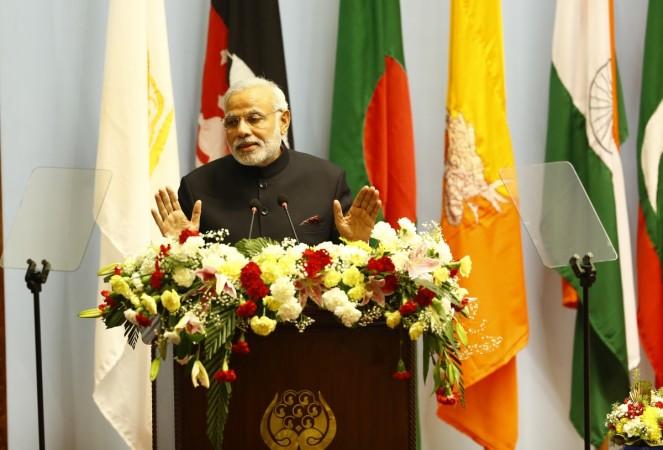
Prime Minister Narendra Modi will attend the Bay of Bengal Initiative for Multi-Sectoral Technical and Economic Cooperation (BIMSTEC) Summit in Nepal on August 30 and August 31. It is the fourth BIMSTEC Summit with the theme 'Towards a peaceful, prosperous and sustainable Bay of Bengal region'.
According to Firstpost, Modi highlighted that his participation in the BIMSTEC summit in Kathmandu signals India's highest priority to its neighbourhood and a strong commitment to continue deepening ties with the "extended neighbourhood".
He also expressed interest in meeting Nepal Prime Minister KP Sharma Oli and reviewing the progress the two countries have made in bilateral ties. Modi and Oli will be inaugurating the Nepal Bharat Maitri Dharmashala at the Pashupatinath temple complex.
What is BIMSTEC?
BIMSTEC is a regional organisation comprising of seven member states including Bangladesh, Bhutan, India, Nepal, Sri Lanka and two nations from Southeast Asia -- Myanmar and Thailand. These countries lie in littoral and adjacent areas of the Bay of Bengal constituting a contiguous regional unity.
The first BIMSTEC summit was held in Thailand in 1997, second in 2008 in India and third in 2014 in Myanmar. Nepal has assumed the chairmanship of BIMSTEC since 2014. The grouping accounts for 22 percent of the global population and has a combined gross domestic product of $2.8 trillion.
Though BIMSTEC has 14 priority sectors, the summit has integrated two more priority sectors - Blue Economy and Mountain Economy. Oli said, "BIMSTEC should not be a mere group of nations, rather it should serve as an effective organisation for enhancing regional cooperation and prosperity."
Technological and economic cooperation among South Asian and Southeast Asian countries along the coast of the Bay of Bengal is the main objective of BIMSTEC. They also recommended trimming the numbers of areas of cooperation undertaken by the regional body and identifying focused agendas of cooperation.
(With inputs from PTI)

















